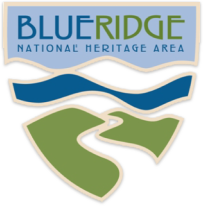
Carroll Best
Carroll Best, from Haywood County, was a master of the melodic or “fiddle” style of picking the banjo. He perfected an intricate finger-picking technique that allowed him to perform a variety of tunes—from complex hornpipes to breakdowns—with great precision and beautiful tone.
His parents were his first teachers, and Carroll believed his style had been passed down in the family over several generations. “My dad said he got it from my Grandmother Best. She got it from her mother,” he explained. “My mother played real good clawhammer, and my dad played this three-finger [style]. And when I was old enough to pick up a banjo, I wanted to play.”
By age ten, in 1941, Carroll Best was playing for square dances at the Maggie Valley Playhouse, and local fiddlers like Tommy Hunter were making an impression on him. “I grew up playing dances,” he said. “My older brother would take me to them. That’s how I got to play. Very gradually I got into it. You see, these old fiddlers would play this, and that was really what I liked, was playing those hornpipes. So I just started playing what the fiddle played.” His distinctive playing—using two and sometimes three fingers to render the melody of a tune accurately—reflects his admiration of the fiddle style and his creative adaptation of fiddle tunes to the banjo.
Carroll worked briefly as a professional musician in the 1950s, playing banjo with Zeke and Wiley Morris. While he was with the Morris Brothers’ band, he influenced young bluegrass banjo players who were developing a melodic style of three-fingered picking that eventually evolved into the chromatic style used by musicians such as Tony Trischka and Bela Fleck.
The travel required of a full-time musician did not suit him, and Carroll Best returned to farming. At home, he continued to play with the many fine musicians living nearby. He won prizes at local conventions and contests, including Fiddler’s Grove and the Asheville Folk Festival. In 1990 he received the Lunsford Award at the Bascom Lamar Lunsford Festival at Mars Hill College. He was part of the faculty at the 1990 Tennessee Banjo Institute, and was a featured performer on the “Masters of the Banjo” tour organized by the National Council for the Traditional Arts. In 1994 he received the North Carolina Heritage Award.


